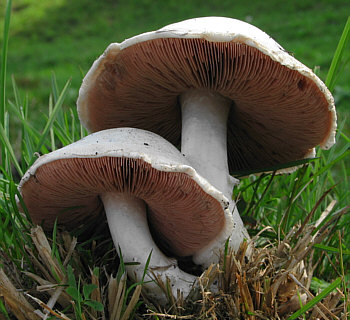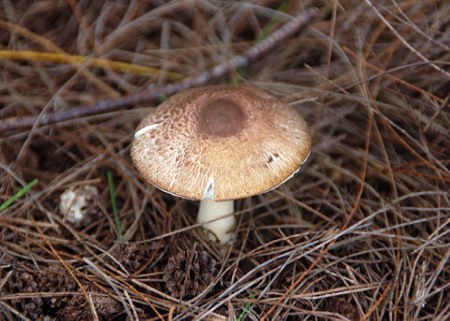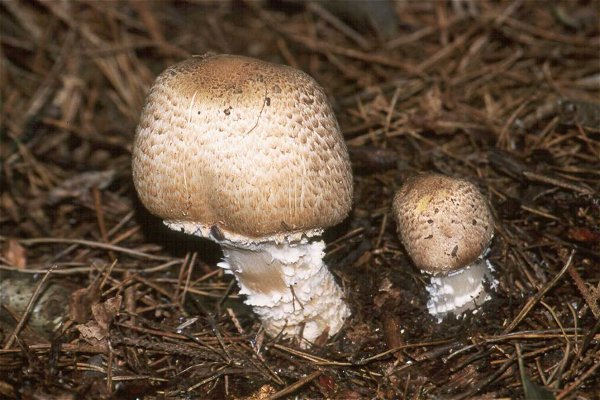Elite life

Mushrooms
Agaricus
║ Mushrooms ║
Button Mushroom (Agaricus bisporus)

Cap: 3-16 cm, convex to broadly convex or nearly flat in age; dry; smooth or with pressed-down fibers or small scales; white in some varieties, brown in others.
Gills: Free from the stem; close; pinkish to pinkish brown at first, becoming dark brown to blackish.
Stem: 2-8 cm long; 1-3 cm. thick; sturdy; more or less equal; smooth or with small scales below the ring; white, often bruising brownish; with a ring that sometimes disappears in maturity.
Flesh: White and firm; usually bruising and staining brownish.
Field Mushroom, Meadow Mushroom (Agaricus campestris)

Cap: 3 to 10 cm in diameter, the cap is creamy white, sometimes developing small scales as it matures. Usually the margin remains down-turned or slightly in-rolled even when the cap has expanded fully. The thick flesh is white, sometimes turning slightly pink when cut but never staining yellow.
Gills: Deep pink at first, the free crowded gills turn dark brown and eventually almost black as the fruit body matures. Old specimens may become infested by maggots, which enter the cap flesh via the gills. Careful inspection is necessary, and it is inadvisable to include very old specimens in collections intended for food.
Stipe: 3 to 10 cm tall and 1 to 2 cm in diameter, the white stem is smooth above the single, delicate ring and somewhat scaly below. It is more or less parallel and does not turn yellow when cut. The ring itself is ephemeral, and by the time the fruit body is fully developed there is rarely much evidence of a ring remaining.
Spore print: Deep chocolate brown.
Himematsutake (Agaricus subrufescens, Agaricus blazei)

Cap: 7-25 cm; round, sometimes shaped like a marshmallow when young, becoming convex to nearly flat; surface dry, when young covered with fine matted fibrils which break up into tiny scales, except at the center; fibrils pallid, buff, pale brown, or pinkish-brown; scales becoming darker brown or reddish with age; background color white to pinkish-buff; sometimes yellowing with age or when bruised.
Gills: Free from the stem; close; whitish when young, becoming pinkish, then reddish brown, and eventually dark chocolate brown.
Stem: 5-15 cm long; 1-4 cm thick; equal or enlarged at base; with a thick membranous partial veil which has cottony patches on the underside and which forms a high, skirt-like ring; white to pinkish above the ring; smooth or with fibrils or scales below; base often staining yellow with age or when bruised (but the flesh inside does not stain bright yellow when cut); base often with mycelial threads attached.
The Prince (Agaricus augustus)

The cap is 6-32 cm broad, convex expanding to plane; surface dry with yellow-brown to brown scales, bruising yellow in age, staining yellow slowly with KOH; Flesh thick, odor sweet, anise or almond-like. Gills are close, free, pale at first, then blackish-brown at maturity. The stipe is 10-37 cm long, up to 6 cm thick, equal to enlarged at base, frequently buried; smooth above ring, scaly below; veil with cottony patches, later becoming membranous, forming a skirt-like annulus. Spores are 7.5-10.5 x 5-6.5 μm, elliptical and smooth. Spore print chocolate-brown.
║ Mushrooms ║